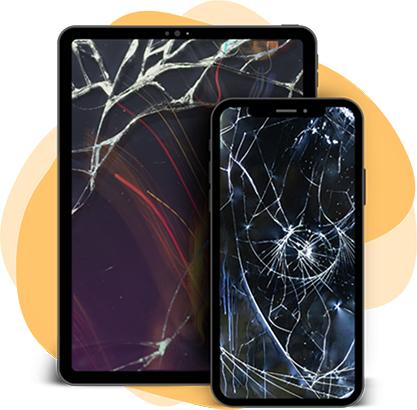No products in the cart.
Understanding How Wireless Charging Work For Android Devices
You may have heard about wireless charging and its convenience, but do you truly understand how it works? The concept of transmitting power without the need for physical connections may seem like something out of a science fiction novel, but it’s very much a reality today. As you go about your day, you might wonder how your smartphone can charge without being plugged in. The inner workings of wireless charging are both fascinating and practical, and delving into the intricacies of this technology can provide valuable insight into its potential impact on various aspects of our lives.
Wireless Charging Fundamentals
Wireless charging fundamentals involve the understanding of the underlying principles and technologies that enable the transfer of electrical power without the need for physical connectors or cables. This technology relies on a coil in the device, which is used to create a magnetic field. When a compatible wireless charger or wireless charging pad is placed near the device, it also contains a coil that converts electrical energy into a magnetic field. This process, known as wireless power transfer, allows the energy to be transferred from the wireless charger to the built-in wireless charging coil in the device. The Qi standard, commonly used for wireless charging, specifies tightly-coupled electromagnetic inductive charging, ensuring efficient and safe power transfer. Understanding these wireless charging fundamentals is crucial for the seamless integration of this technology into various industries and devices.

Technology Behind Wireless Charging
With the technology behind wireless charging, a transmitter emits an alternating magnetic field to induce a current in a receiver coil inside the device. This inductive charging capability is the foundation of Qi wireless charging, where devices with the Qi logo can be charged by simply placing them on a Qi-certified charging area. Additionally, resonant charging, also known as magnetic resonance, further enhances the charging efficiency by increasing the induced current in receivers. The electromagnetic field generated by the transmitter is picked up by the receiver coil inside the device, enabling efficient and convenient charging. This technology has revolutionized the way we power our devices, offering increased mobility and flexibility. As the technologies continue to evolve, they are becoming increasingly prevalent in various industries, providing a sense of belonging to the ever-growing community of wireless charging users.
| Wireless Charging Types | Applications |
|---|---|
| Inductive Charging | Smartphones, Kitchen Appliances, IoT Devices |
| Resonant Charging | Laptops, Automotive, Healthcare |
| Uncoupled Radio Frequency (RF) Charging | Emerging Applications in Manufacturing |

Don't Let A Broken Phone Hold You Back
Look no further! Our comprehensive price list covers all major brands and models, ensuring that you can easily find the repair cost for your specific phone. Pleas check our price list for details
Wireless Charging Standards
When considering wireless charging standards, it is crucial to understand the underlying technical specifications and compatibility requirements for different devices. The Qi and PMA standards are the main players in the arena, both relying on inductive charging technology and resonant-inductive coupling principles. Qi, operating within a 100-205 kHz band, is more widely known and popular. Some charging pads can reach up to 15 watts, but the typical maximum charging speed is around 10 watts. Considerations for wireless charging also include device compatibility, case thickness, and the impact of materials like aluminum on charging efficiency.

- Qi and PMA are the two main wireless charging standards, both using inductive charging technology.
- PMA operates in a 277-357 kHz band, while Qi operates within a 100-205 kHz band, with Qi being the more widely known and popular standard.
- Some charging pads can reach up to 15 watts, but typical maximum charging speed is around 10 watts.
Wireless Charging Applications
Tightly-coupled electromagnetic inductive charging is widely employed in a variety of applications, including smartphones, laptops, kitchen appliances, and automobiles, and is gradually expanding its presence in sectors such as healthcare, automotive, and manufacturing. Indicators point to a growing demand for public infrastructure and wireless chargers for personal devices. This technology relies on a transmitter coil to generate a magnetic field, which in turn induces power in a receiver coil within the device being charged. As this technology advances, it is increasingly being integrated into various devices, with the potential for broader applications in public infrastructure and industrial settings. The use of wireless power is expected to continue expanding as the technology becomes more efficient and widespread.
Future of Wireless Charging
The future of wireless charging holds promise for widespread adoption in various industries, with ongoing research and development efforts focused on increasing power transfer efficiency and enabling wireless charging over longer distances. As the technology has been around since the late 19th century, market indicators show a growing interest in wireless charging, particularly in the automotive sector with the rise of electric cars. Wireless charging, as it has been around in devices like iPhones, works by emitting an alternating magnetic field from a transmitter coil, inducing an alternating voltage/current in a receiver coil inside the device. In the coming years, we will likely see advancements in magnetic resonant coupling, enabling efficient power transfer over larger distances, and further integration into IoT devices, healthcare, and manufacturing.

- Advancements in magnetic resonant coupling
- Integration into electric cars
- Expansion into IoT, healthcare, and manufacturing

Book Online &
Save $10 on Your Mobile Phone Repair
By booking online, you get an exclusive $10 discount on your repair cost. Don’t miss out on this special offer!
Frequently Asked Questions
It operates through electromagnetic induction, where energy transfers via a magnetic field. Inductive coupling between the charging pad and device creates a magnetic field, inducing current in the receiver coil, enhancing charging efficiency and enabling power transmission over varying distances.
The disadvantage lies in efficiency concerns, limited range, and potential health risks. Device alignment, heat generation, and compatibility problems can also impact the overall charging experience.
The principle is basically electromagnetic induction, using alternating magnetic fields to transmit power between coils. It enables efficient power transmission, with varying distances and efficiency based on coil size. This technology is widely used in consumer devices and continues to advance for future improvements.
Wireless charging transfers energy through inductive coupling, using a magnetic field from a charging pad to induce voltage in your device. This technology, based on the Qi standard, offers convenient power delivery for mobile devices, but efficiency rates and charging distance can vary.
Fast wireless charging is a feature that allows compatible smartphones to charge at a quicker rate when using a compatible fast charging pad. It can significantly reduce the time it takes to recharge the device wirelessly.
Yes, there are various mats and stands available for Android devices. Some support standard charging, while others offer fast charging features for compatible smartphones.
Yes, there are competing wireless charging standards such as the Wireless Power Consortium (Qi standard) and the Alliance for Wireless Power (A4WP). It’s important to ensure that the wireless charging mat or device you choose is compatible with your Android smartphone.
Yes, there are wireless charging mats and stands that support both Android and iPhone devices. However, it’s essential to check for compatibility and ensure that the wireless charger you choose can support the specific devices you own.
Wireless charging eliminates the need for a physical charging cable, allowing for more convenience and reducing wear and tear on charging ports. It also provides a clutter-free charging experience and can support fast charging capabilities for compatible smartphones.
For utilizing wireless charge stations or charging stand, your phone will need to be compatible with wireless charging. Some smartphones may also require a special case or additional accessory to enable wireless charging if they do not have built-in support.
Yes, wireless charging has become increasingly popular, and most modern Android smartphones offer support for wireless charging. As the technology continues to evolve, more devices and accessories are being designed to support wireless charging capabilities.






